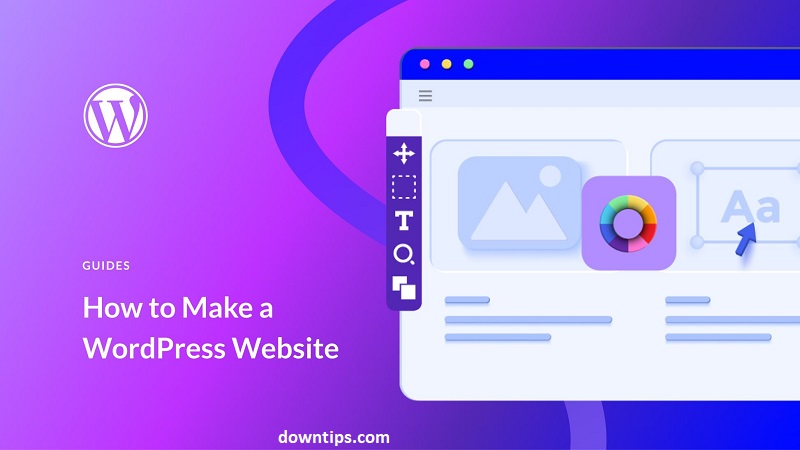Downtips gives you the best way How to create an e-commerce website. The full instructions and descriptions are given below. Also gives you the uses and features.
Creating an e-commerce website involves several steps, including planning, design, development, and launching. Below is a comprehensive guide on how to create an e-commerce website, along with an explanation of what an e-commerce website is:
What is an E-commerce Website?
An e-commerce website is an online platform that allows businesses to sell products or services over the internet. These websites facilitate transactions between buyers and sellers, providing a virtual marketplace where customers can browse, select, and purchase items from the comfort of their own homes. E-commerce websites often include features such as product listings, shopping carts, secure payment gateways, and order management systems.
- Product Listings: Detailed descriptions, images, and pricing of products or services available for purchase.
- Shopping Cart: A virtual cart that allows customers to add items they wish to purchase and proceed to checkout.
- Secure Payment Gateway: Integration with secure payment processors to facilitate online transactions and protect sensitive customer information.
- User Accounts: Optional user accounts that enable customers to save preferences, track order history, and manage shipping addresses.
- Order Management: Tools for managing orders, processing payments, and tracking shipments.
- Search and Navigation: User-friendly search functionality and navigation menus to help customers find products easily.
- Responsive Design: Mobile-friendly design that ensures the website functions properly and displays correctly on various devices.
- Customer Support: Contact information, FAQs, and customer support channels to assist customers with inquiries or issues.

Instructions for Creating an E-commerce Website:
- Define Your Goals and Requirements: Determine the purpose of your e-commerce website, your target audience, and the products or services you plan to sell. Identify your budget, technical requirements, and any specific features or functionalities you need.
- Choose a Platform: Select an e-commerce platform that suits your needs. Popular options include Shopify, WooCommerce (WordPress plugin), Magento, BigCommerce, and Squarespace. Consider factors such as ease of use, customization options, scalability, and pricing when choosing a platform.
- Register a Domain Name: Choose a domain name for your e-commerce website that reflects your brand and is easy for customers to remember. Register the domain through a domain registrar or your chosen e-commerce platform.
- Select a Hosting Provider: Choose a reliable web hosting provider to host your e-commerce website. Look for hosting plans that offer sufficient storage, bandwidth, security features, and support for your chosen platform.
- Design Your Website: Customize the design of your e-commerce website to align with your brand identity and create a seamless user experience. Choose a responsive design that looks good on desktop and mobile devices. Consider hiring a web designer or using pre-designed templates provided by your e-commerce platform.
- Add Product Listings: Create detailed product listings for each item you plan to sell. Include high-quality images, descriptive titles, specifications, pricing, and other relevant information. Organize products into categories and subcategories to make navigation easier for customers.
- Set Up Payment Gateways: Choose and integrate payment gateways that allow customers to securely make purchases on your website. Popular payment options include credit/debit cards, PayPal, Apple Pay, Google Pay, and other online payment methods.
- Implement Security Measures: Ensure the security of your e-commerce website by implementing SSL encryption, secure payment processing, PCI compliance, and other security measures to protect customer data and transactions.
- Enable Shopping Cart and Checkout: Set up a shopping cart system that allows customers to add items to their cart and proceed to checkout. Optimize the checkout process for simplicity and convenience, minimizing the number of steps required to complete a purchase.
- Test and Launch Your Website: Test your e-commerce website thoroughly to identify and fix any bugs, errors, or usability issues. Test the website’s functionality, performance, compatibility, and security across different devices and web browsers. Once testing is complete, launch your e-commerce website and make it live for customers to access.
- Market Your Website: Promote your e-commerce website through digital marketing channels such as social media, email marketing, search engine optimization (SEO), pay-per-click (PPC) advertising, content marketing, and influencer partnerships. Drive traffic to your website and attract potential customers to increase sales and grow your business.




